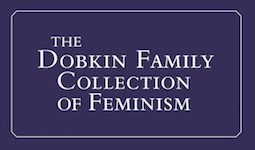Book of the Class of 1927 of The Ogontz School.
[Education]. (Osborne, Jean Curtis, ed.). The Book of the Class of Nineteen Hundred and Twenty-seven of the Ogontz School. Rydal, Pennsylvania. Philadelphia: [Willson G. Kent Co.], 1927.
8vo.; marbled endpapers; t.e.g; full morocco, metal clasp on fore-edge; blind-stamped class emblem and motto on upper panel; light wear. In a specially made cloth slipcase.
The 1927 edition of this school annual, with 58 black and white photographs tipped-in throughout; one of 48 copies printed (this is copy #28), each with the owner’s name and copy number set in type at the colophon. Our copy belonged to Mary S. Latta, a day student at the Ogontz school and a graduating senior in the class of 1927.
Following the photographs of the graduating seniors, the Ogontz yearbook features class songs, a class poem, the Valedictory and Salutary addresses, Bible verses, class prayers, photographs of sports teams, and reminiscences about holidays, parties and special senior events throughout the year. The class motto, “Seek for the Highest,” and the emblem picturing Mercury’s cap and a rose, were chosen each year by the graduating class.
The Ogontz School was first established in 1850 as the Chestnut Street Female Seminary in Philadelphia; it became the Ogontz School for Girls in 1883. Enrollment at the Philadelphia location had increased beyond the school’s capacity and a larger campus was needed to accommodate the students and staff. Jay Cooke, of Elkins Park, PA, offered use of his mansion and grounds for that purpose. Cooke was a Union financier during the Civil War who met with financial difficulties in the post-war years. He lived in Ogontz mansion – so named after Chief Ogontz, a Native American who was friendly with Cooke during his boyhood and who taught Cooke wilderness skills. Leasing his mansion to the school would allow Cooke to rebuild his capital. Cooke was not just financially involved in the school: his granddaughters were enrolled, and their father, Charles D. Barney, is pictured in the class book as an “Honorary Member” of the class of 1927.
The yearbook is dedicated to Abby Sutherland-Brown, who was hired in 1902 as an English teacher and eventually became headmistress, president and owner of Ogontz. Under her direction the school made yet another move, in 1916, to nearby Rydal, PA., where it remained until it closed in 1950. With the move, Ogontz re-established itself as a junior college, no longer acting merely as a “finishing school” for upper-class girls; by now, the arts, foreign languages and home economics were included in the curriculum, and it was the first private girls’ school to have a required military drill.
From its inception, Ogontz catered to the educational needs of girls from upper-class families – girls from the lustrous American dynasties like Campbell, Heinz, Dupont and Gillette matriculated at the school – and Sutherland-Brown continued that tradition until it closed its doors. She was also pivotal in maintaining the relations with donors and honorary members of the school; poet Carl Sandburg, for example, made frequent visits to Ogontz and is pictured in the 1927 class book.
As noted on the Senior Calendar page, the Ogontz school was more focused on celebrating holidays and traditional senior rites of passage than on the academic achievements of its students. With the shifting social and scholastic needs of girls in America after World War II, the merits of an Ogontz education became less useful to girls. When the school closed in 1950, Sutherland-Brown gave the school, the library, all of the facilities and property to Penn State University, where is was absorbed into the University system, and still exists today.
(www.abington.psu.edu/psasite/cs/shared/library/collections.html; www.campogantz.com/ aboutogontz.html; www.psu.edu/ur/archives/intercom_2001/Sept13/abington.html
(#8640)
Print Inquire


